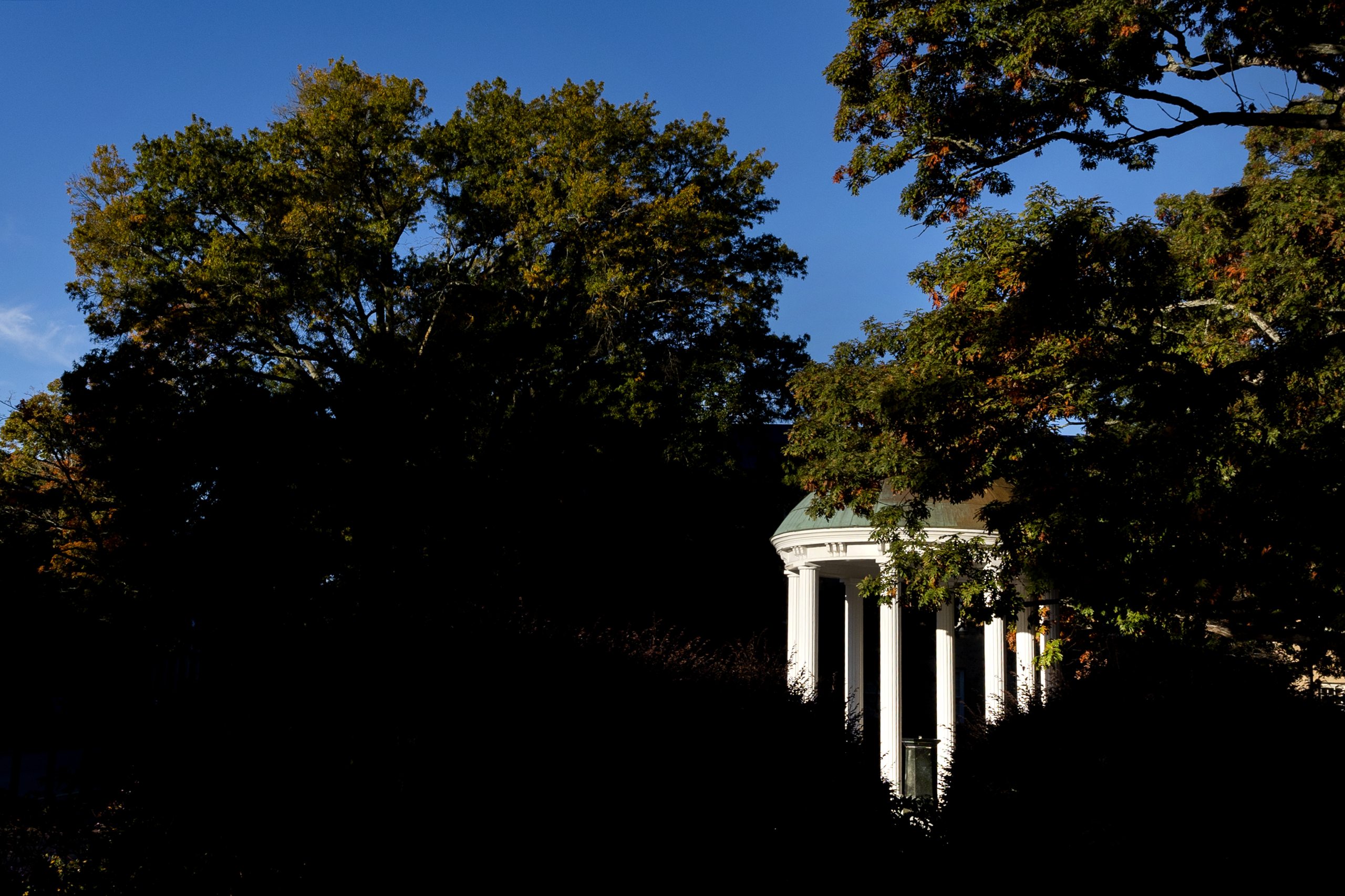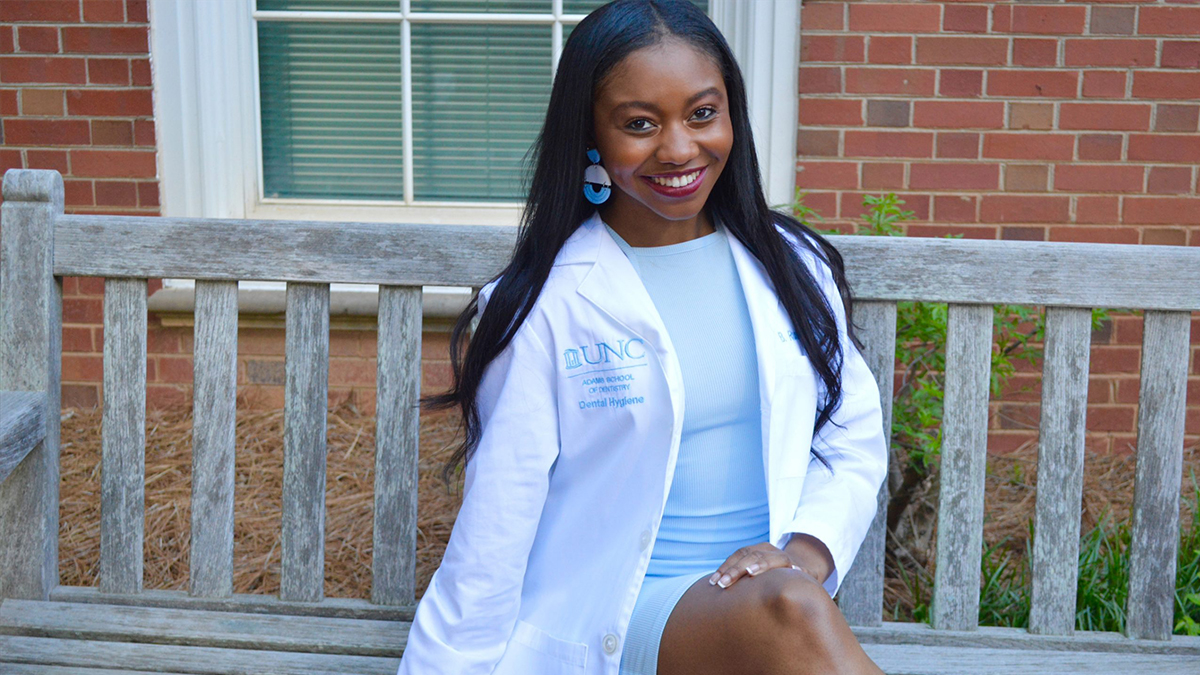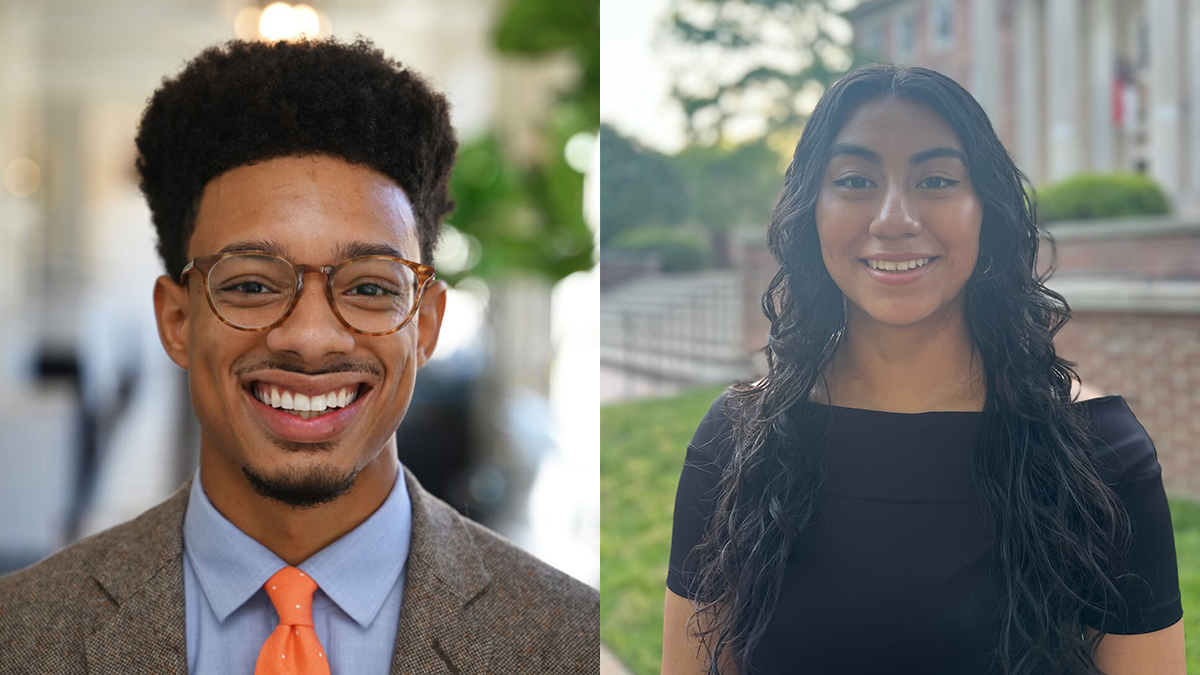New name, same style
Carolina's applied physical sciences department may be the first of its kind in the country.

Studying the collective behavior of flocks of birds or swarms of bees is an example of biology, a pure physical science.
Exploring how collective behavior in nature can be used to make nanoparticles organize themselves into a structure to deliver medication more effectively in the body is an example of applied physical science.
Assistant professor Daphne Klotsa, a physicist, practices a little of both. She is also the first faculty member to be recruited and hired exclusively as a member of Carolina’s emerging Department of Applied Physical Sciences in the College of Arts and Sciences.
“Although my background is in physics, I value enormously the experience I have gleaned from working in engineering and chemistry departments, in addition to physics,” she said. “The applied physical sciences department here at UNC is an ideal place for highly interdisciplinary research.”
The applied physical sciences department may be the first of its kind in the country, said Edward T. Samulski, Cary C. Boshamer Professor of Chemistry, who returned from retirement to lead the department. Samulski brought in Klotsa and Scott Warren, an assistant professor with a joint appointment in the chemistry department, to join a well-established group of faculty affiliates in the departments of chemistry, physics and astronomy, mathematics, biology and medicine.
On this professional bedrock, Samulski is building a department that currently offers master’s degrees and doctorates in material sciences and will offer a new undergraduate major. The University has show its commitment to this highly collaborative way of putting research into use with funding for up to 20 new faculty members over the next decade and a dedicated creator space in Murray Hall for testing applications.
“Our mission is to create and translate scientific research into practical application, taking ideas to impacts,” Samulski said.
The idea of applying pure science to real-world situations is not a new one, especially here at Carolina. The University is well known for researchers who take scientific concepts and adapt them, often in partnership with colleagues in other disciplines, to solve real-world problems. Many of them have already launched spinout companies based on the applications of their research.
“One of the most pressing challenges now is to make sure the outside world knows about this,” Samulski said. “We want top scientists around the country to hear about what we are trying to do here, and we want some of them to get so excited about what we are doing that they come join us.”
Solar energy is the focus of several faculty affiliates of the applied physical sciences department. Warren, for example, uses nanomaterials only a few atoms thick to build solar cells and smart windows that change color depending on the time of day or year. Wei You, associate professor of chemistry, is working with other chemists and physicists to develop flexible, lightweight polymer solar cells to replace brittle, expensive silicon solar cells.
Affiliate faculty member Thomas J. Meyer, Arey Distinguished Professor of Chemistry and director of the UNC Energy Frontier Research Center, and his colleagues developed an artificial photosynthesis process that converts sunlight into storable, low-cost and efficient solar fuels.
In addition to Klotsa’s work on nanoparticles and drug delivery, faculty affiliates with the applied physical sciences department are developing products to improve health.
The interdisciplinary team behind the 15-year-old Virtual Lung Project in the Marsico Lung Institute focuses on solving lung disease, particularly cystic fibrosis. One member of that team is mathematician M. Gregory Forest, Grant Dahlstrom Distinguished Professor of Mathematics and Biomedical Engineering and director of the Carolina Center for Interdisciplinary Applied Mathematics.
Mathematics, Forest said, is essential to understanding the effect of cilia and air movement on mucus flow and the impact of inhaled particles and pathogens on mucus. “Lung health is essentially a race,” he said. “One must understand these properties of mucus to judge the outcome of this race, and to explore the extent to which drugs and physical therapies can steer the outcome of the race.”
Another key member of the team and a department affiliate is Rich Superfine, Taylor-Williams Distinguished Professor of physics and astronomy. Superfine leads a National Institutes of Health center that studies the biological physics of forces in single molecules, cells and physiological phenomena including cancer, blood clotting and mucus clearance. Collaborators in his center include faculty from pharmacy, biology, mathematics and computer science.
Faculty affiliate Otto Zhou, David Godschalk Distinguished Professor of Physics and Astronomy, works with physicists, physicians and biomedical engineers to develop medical imaging devices using the nanotube X-ray technology he invented.
The list of faculty affiliates also includes Joseph DeSimone, Chancellor’s Eminent Professor of Chemistry, UNC, and William R. Kenan Jr. Distinguished Professor of Chemical Engineering, N.C. State. DeSimone’s accomplishments range widely, from a new 3-D printing process to inhaled therapeutics.
Affiliate Nancy Allbritton leads her own strong team of collaborators as chair of the UNC/NCSU Joint Department of Biomedical Engineering. She is also Kenan Distinguished Professor of Chemistry, Debreczeny Distinguished Professor and director of the Curriculum of Applied Science and Engineering.
Faculty affiliates have also used nanotechnology to target drug treatments for cancer, developed improved lab-on-a-chip technologies (miniature devices that can perform lab analyses on-site) for clinical diagnostics and environmental monitoring, and explored ways to remove kidney stones and tumors without surgery.
As the department’s first faculty member, Klotsa also wants to make her mark. In addition to “cooperative nanoparticles,” she envisions “swarms of robots used for rescue and deep-ocean exploration and synthetic smart materials that adapt, self-heal and regenerate.”
That’s how the applied physical sciences faculty member plans to apply her study of the birds and the bees




